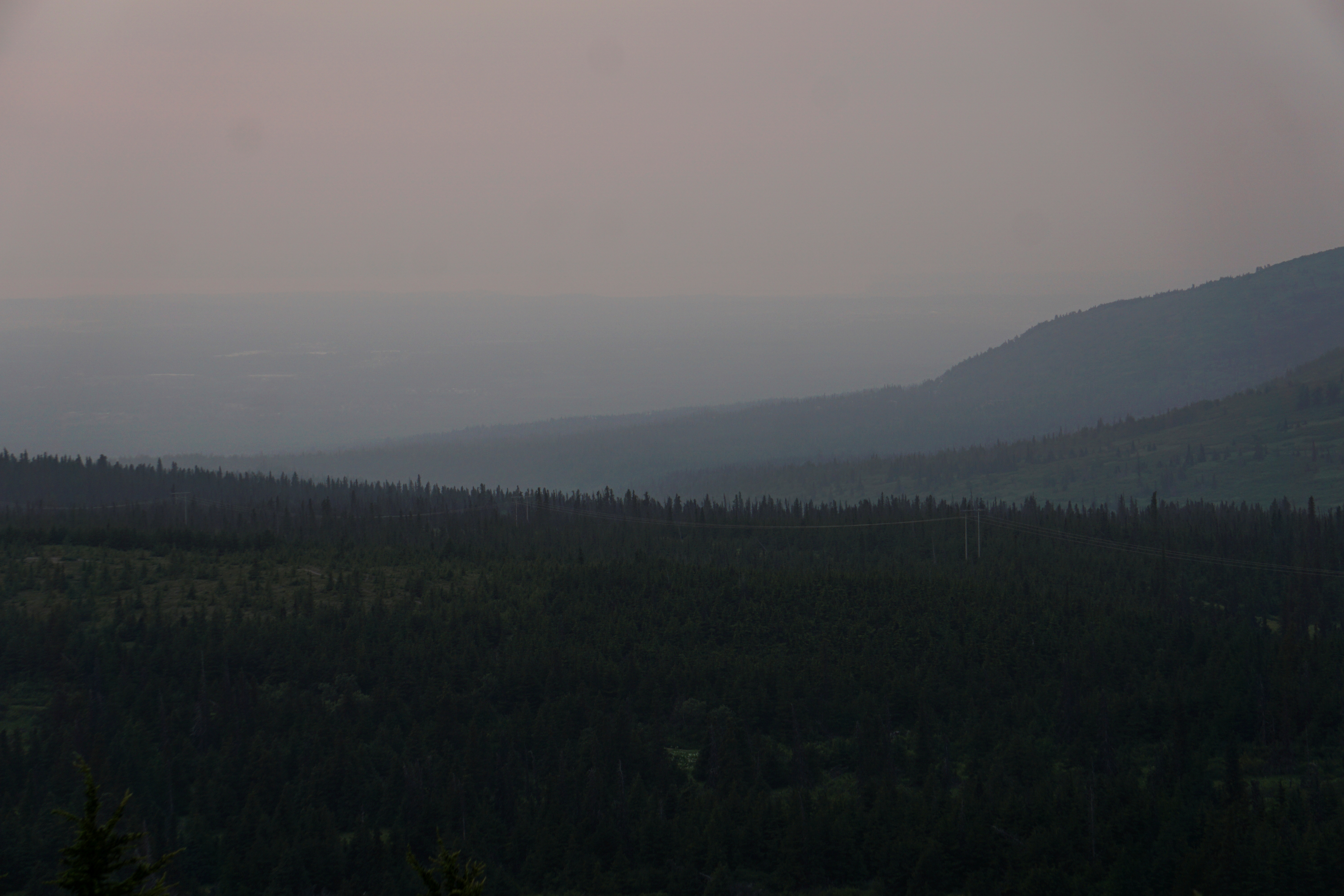Air quality plummets as wildfire smoke hits Alaska’s cities
Fairbanks, in sub-Arctic Alaska, is suffering some of the worst air pollution in the world because of wildfire smoke.

ANCHORAGE, Alaska — Smoke and soot from central Alaska wildfires have afflicted the sub-Arctic city of Fairbanks with some of the world’s worst air pollution in recent days, forcing many residents indoors and prompting one hospital to set up a “clean air shelter.”
Fine particulate matter carried by smoke into the Fairbanks North Star Borough over the past two weeks has been measured at concentrations as high as more than double the minimum level deemed hazardous to human health, borough air quality manager Nick Czarnecki said.
The hazardous threshold was exceeded again on Tuesday in the Fairbanks suburb of North Pole, the borough reported.
The problem is mostly linked to two fires burning since June 21 on either side of the Fairbanks borough — Alaska’s second-most populous metropolitan area, totaling some 97,000 residents.
The Shovel Creek and Nugget fires, both sparked by lightning strikes, have scorched nearly 20,000 acres (8,094 hectares) of timber and brush combined, fire authorities said.
Farther north, the massive Hess Creek blaze, also sparked by lightning, has raged across nearly 173,000 acres (70,000 hectares) of remote timber and grasslands, making it the largest U.S. wildfire so far this year, according to fire command spokeswoman Sarah Wheeler.
Thick smoke drifting into Fairbanks has prompted air quality alerts warning that outdoor exertion is dangerous to health and urging the elderly, the very young and individuals with respiratory problems to limit their exposure by staying indoors.
That restriction has proved difficult for some because few homes in Fairbanks, a city just 200 miles (322 kilometers) south of the Arctic Circle by road, are equipped with air conditioning, and a heat wave in the region has driven temperatures into the 80s and 90s Fahrenheit.
Fairbanks Memorial Hospital has opened a round-the-clock clean-air room where members of the public can find respite from the pollution. A Fairbanks auto shop was also giving away breathing masks to help residents cope.
“All the HEPA filters and everything are sold out in town, and the smoke is terrible,” Pearson Auto employee Michelle Pippin said.
A similar but somewhat less dire predicament faced residents of Alaska’s largest city, Anchorage, about 350 miles (560 kilometers) to the south, where smoke from a major fire raging for the past month in the neighboring Kenai National Wildlife Refuge has caused unhealthy air.
The Swan Lake blaze has charred nearly 97,000 acres (39,200 hectares) of the Kenai Peninsula since it was triggered by lightning on June 5.
Anchorage has also baked in unusually high temperatures, with three of its hottest days on record posted during the past week, including the city’s first-ever 90-degree Fahrenheit (32 Celsius) reading on July Fourth.
The record heat has only added to the general misery index in Alaska, where the National Interagency Fire Center reports about 40 large wildfires have burned more than 810,000 acres (32,780 hectares) across the state.
Wildfires have consumed more than 1 million acres (404,685 hectares) in all so far this year, but that pales in comparison with the record 6.5 million acres (2.6 million hectares) that went up in flames across Alaska in 2004.